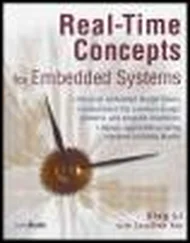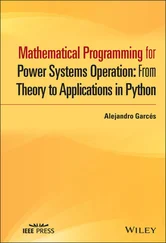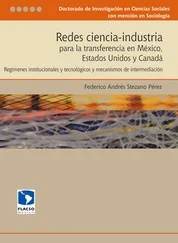11 Chapter 11Table 11.1 Operation modes of the PV inverter.Table 11.2 Parameters of the system.
12 Chapter 12Table 12.1 Operation modes of a STATCOM.
13 Chapter 13Table 13.1 Parameters of a synchronverter.
14 Chapter 14Table 14.1 Parameters of the system under simulation.
15 Chapter 15Table 15.1 Operation modes.Table 15.2 Parameters of the inverter.
16 Chapter 17Table 17.1 Droop controllers for L‐, R‐, C‐,  ‐, and
‐, and  ‐inverters. Table 17.2 Steady‐state performance of the three inverters in parallel operat...
‐inverters. Table 17.2 Steady‐state performance of the three inverters in parallel operat...
17 Chapter 18Table 18.1 Operation modes of the self‐synchronized universal droop controlle...Table 18.2 Parameters of the inverter.Table 18.3 Parameters of the microgrid.
18 Chapter 19Table 19.1 Parameters of the experimental droop‐controlled rectifier.
19 Chapter 20Table 20.1 System and controller parameters.
20 Chapter 21Table 21.1 Operation modes of the cybersync machine in Figure 21.7.Table 21.2 Parameters of the cybersync machine under simulation.Table 21.3 Parameters of the experimental cybersync machine.
21 Chapter 25Table 25.1 Parameters of the back‐to‐back converters.Table 25.2 Installed wind capacity in Panhandle.Table 25.3 Parameters of 345 kV transmission lines.Table 25.4 Comparison of export capabilities under different control strategi...
1 Chapter 1 Figure 1.1 Structure of the book.
2 Chapter 2 Figure 2.1 Examples of divisive opinions in a democratic society. (a) 2016 UK ... Figure 2.2 The sinusoid‐locked loop (SLL) that explains the inherent synchroni... Figure 2.3 Approximate electricity consumption in the US. Figure 2.4 A two‐port virtual synchronous machine (VSM). Figure 2.5 SYNDEM grid architecture based on the synchronization mechanism of ... Figure 2.6 A SYNDEM home grid. Figure 2.7 A SYNDEM neighbourhood grid. Figure 2.8 A SYNDEM community grid. Figure 2.9 A SYNDEM district grid. Figure 2.10 A SYNDEM regional grid. Figure 2.11 The iceberg of power system challenges and solutions. Figure 2.12 The frequency regulation capability of a VSM connected the UK publ...
3 Chapter 3 Figure 3.1 Illustrations of the imaginary operator and the ghost operator. (a)... Figure 3.2 The system pair that consists of the original system and its ghost....Figure 3.3 Illustration of the ghost power theory.
4 Chapter 4Figure 4.1 Structure of an idealized three‐phase round‐rotor synchronous gener...Figure 4.2 The power part of a synchronverter is a basic inverter.Figure 4.3 The electronic part of a synchronverter without control.Figure 4.4 The electronic part of a synchronverter with the function of freque...Figure 4.5 Operation of a synchronverter under different grid frequencies (lef...Figure 4.6 Experimental setup with two synchronverters. (a) System structure. ...Figure 4.7 Experimental results in the set mode: output currents with 2.25 kW ...Figure 4.8 Experimental results in the set mode: output currents (left column)...Figure 4.9 Experimental results in the droop mode: primary frequency response.Figure 4.10 Experimental results: the currents of the grid, VSG, and VSG2 unde...Figure 4.11 Real power  and reactive power
and reactive power  during the change in the operati...Figure 4.12 Transient responses of the synchronverter. (a) Transfer from grid‐...
during the change in the operati...Figure 4.12 Transient responses of the synchronverter. (a) Transfer from grid‐...
5 Chapter 5Figure 5.1 Structure of an idealized three‐phase round‐rotor synchronous motor...Figure 5.2 The model of a synchronous motor.Figure 5.3 PWM rectifier treated as a virtual synchronous motor.Figure 5.4 Directly controlling the power of a rectifier.Figure 5.5 Controlling the DC‐bus voltage of a rectifier.Figure 5.6 Simulation results when controlling the power. (a) Grid and interna...Figure 5.7 Simulation results when controlling the DC‐bus voltage. (a) Grid an...Figure 5.8 Experimental results when controlling the power. (a) Grid and inter...Figure 5.9 Experimental results when controlling the DC‐bus voltage. (a) Grid ...
6 Chapter 6Figure 6.1 Integration of a PMSG wind turbine into the grid through back‐to‐ba...Figure 6.2 Controller for the RSC.Figure 6.3 Controller for the GSC.Figure 6.4 Dynamic response of the GSC. (a) Full simulation process. (b) Volta...Figure 6.5 Dynamic response of the RSC. (a) Full simulation process. (b) Volta...Figure 6.6 Real‐time simulation results with a grid fault appearing at  s for...
s for...
7 Chapter 7Figure 7.1 Conventional (DC) Ward Leonard drive system.Figure 7.2 AC Ward Leonard drive system. (a) Natural implementation. (b) Virtu...Figure 7.3 Mathematical model of a synchronous generator.Figure 7.4 Control structure for an AC WLDS with a speed sensor.Figure 7.5 Control structure for an AC WLDS without a speed sensor.Figure 7.6 An experimental AC drive.Figure 7.7 Reversal from a high speed without a load. (a) Speed. (b) Torque of...Figure 7.8 Reversal from a high speed with a load. (a) Speed. (b) Torque of th...Figure 7.9 Reversal from a low speed without a load. (a) Speed. (b) Torque of ...Figure 7.10 Reversal from a low speed with a load. (a) Speed. (b) Torque of th...Figure 7.11 Reversal at an extremely low speed without a load. (a) Speed. (b) ...Figure 7.12 Reversal from a high speed without a load (without a speed sensor)...Figure 7.13 Reversal from a high speed with a load (without a speed sensor). (...
8 Chapter 8Figure 8.1 Typical control structures for a grid‐connected inverter. (a) When ...Figure 8.2 A compact controller that integrates synchronization and voltage/fr...Figure 8.3 The per‐phase model of an SG connected to an infinite bus.Figure 8.4 The controller for a self‐synchronized synchronverter.Figure 8.5 Simulation results: under normal operation. (a) Frequencies  and
and  Figure 8.6 Simulation results: connection to the grid. (a)
Figure 8.6 Simulation results: connection to the grid. (a)  and
and  . (b)
. (b)  .Figure 8.7 Comparison of the frequency responses of the self‐synchronized sync...Figure 8.8 Dynamic performance when the grid frequency increased by 0.1 Hz at Figure 8.9 Simulation results under grid faults: when the frequency dropped by...Figure 8.10 Experimental results: when the grid frequency was lower (left colu...Figure 8.11 Experimental results of the original synchronverter: when the grid...Figure 8.12 Voltages around the connection time: when the grid frequency was l...
.Figure 8.7 Comparison of the frequency responses of the self‐synchronized sync...Figure 8.8 Dynamic performance when the grid frequency increased by 0.1 Hz at Figure 8.9 Simulation results under grid faults: when the frequency dropped by...Figure 8.10 Experimental results: when the grid frequency was lower (left colu...Figure 8.11 Experimental results of the original synchronverter: when the grid...Figure 8.12 Voltages around the connection time: when the grid frequency was l...
9 Chapter 9Figure 9.1 Controlling the rectifier DC‐bus voltage without a dedicated synchr...Figure 9.2 Controlling the rectifier power without a dedicated synchronization...Figure 9.3 Simulation results when controlling the DC bus voltage. (a) Frequen...Figure 9.4 Grid voltage and control signal. (a) Uncontrolled mode. (b) PWM‐con...Figure 9.5 Grid voltage and input current. (a) Uncontrolled mode. (b) When  =0...Figure 9.6 Simulation results when controlling the real power. (a) Frequencies...Figure 9.7 Experiment results: controlling the DC‐bus voltage. (a) Frequencies...Figure 9.8 Experiment results: controlling the power. (a) Grid and internal fr...
=0...Figure 9.6 Simulation results when controlling the real power. (a) Frequencies...Figure 9.7 Experiment results: controlling the DC‐bus voltage. (a) Frequencies...Figure 9.8 Experiment results: controlling the power. (a) Grid and internal fr...
Читать дальше

 ‐, and
‐, and  ‐inverters. Table 17.2 Steady‐state performance of the three inverters in parallel operat...
‐inverters. Table 17.2 Steady‐state performance of the three inverters in parallel operat... and reactive power
and reactive power  during the change in the operati...Figure 4.12 Transient responses of the synchronverter. (a) Transfer from grid‐...
during the change in the operati...Figure 4.12 Transient responses of the synchronverter. (a) Transfer from grid‐... s for...
s for... and
and  Figure 8.6 Simulation results: connection to the grid. (a)
Figure 8.6 Simulation results: connection to the grid. (a)  and
and  . (b)
. (b)  .Figure 8.7 Comparison of the frequency responses of the self‐synchronized sync...Figure 8.8 Dynamic performance when the grid frequency increased by 0.1 Hz at Figure 8.9 Simulation results under grid faults: when the frequency dropped by...Figure 8.10 Experimental results: when the grid frequency was lower (left colu...Figure 8.11 Experimental results of the original synchronverter: when the grid...Figure 8.12 Voltages around the connection time: when the grid frequency was l...
.Figure 8.7 Comparison of the frequency responses of the self‐synchronized sync...Figure 8.8 Dynamic performance when the grid frequency increased by 0.1 Hz at Figure 8.9 Simulation results under grid faults: when the frequency dropped by...Figure 8.10 Experimental results: when the grid frequency was lower (left colu...Figure 8.11 Experimental results of the original synchronverter: when the grid...Figure 8.12 Voltages around the connection time: when the grid frequency was l... =0...Figure 9.6 Simulation results when controlling the real power. (a) Frequencies...Figure 9.7 Experiment results: controlling the DC‐bus voltage. (a) Frequencies...Figure 9.8 Experiment results: controlling the power. (a) Grid and internal fr...
=0...Figure 9.6 Simulation results when controlling the real power. (a) Frequencies...Figure 9.7 Experiment results: controlling the DC‐bus voltage. (a) Frequencies...Figure 9.8 Experiment results: controlling the power. (a) Grid and internal fr...










